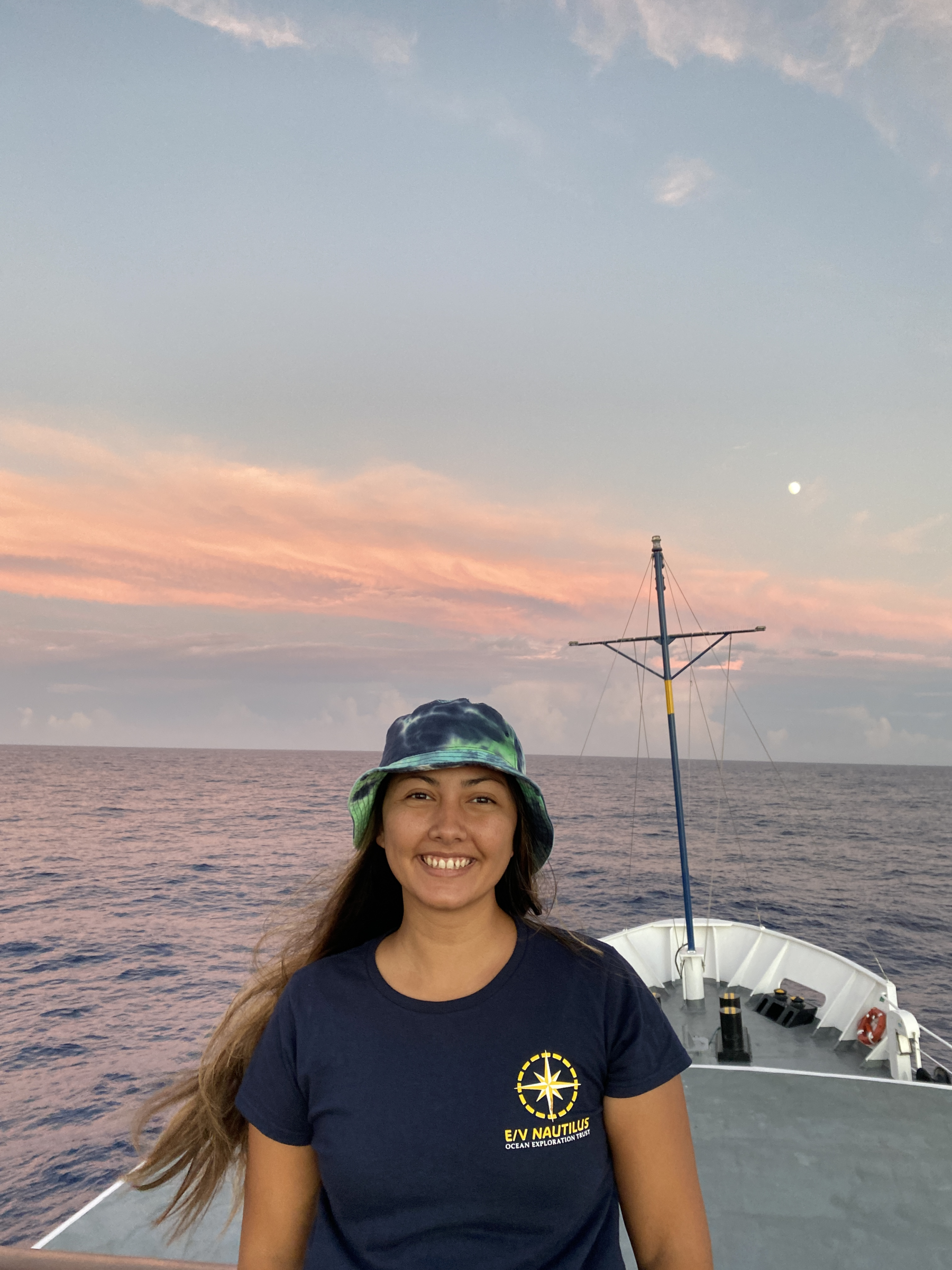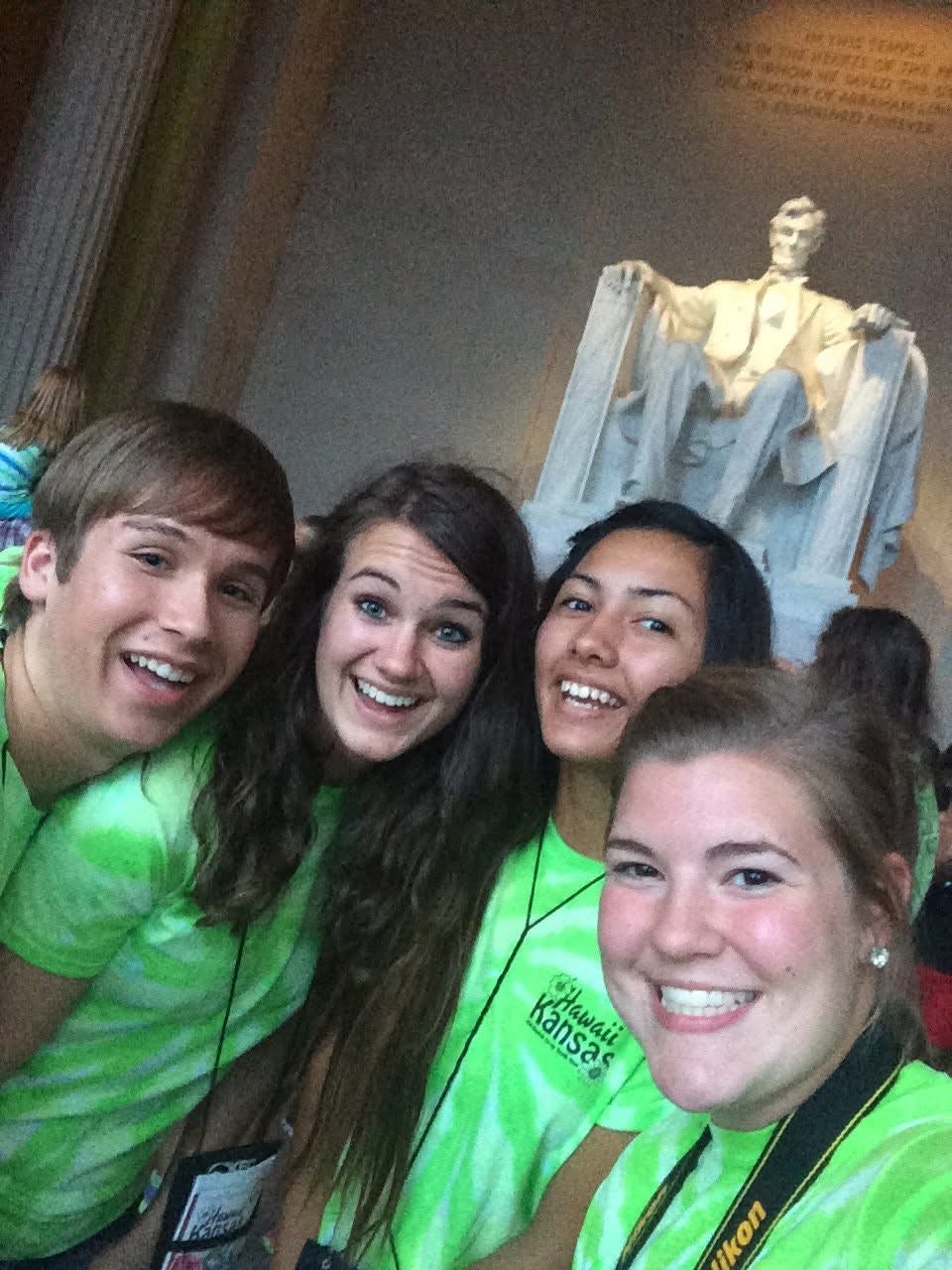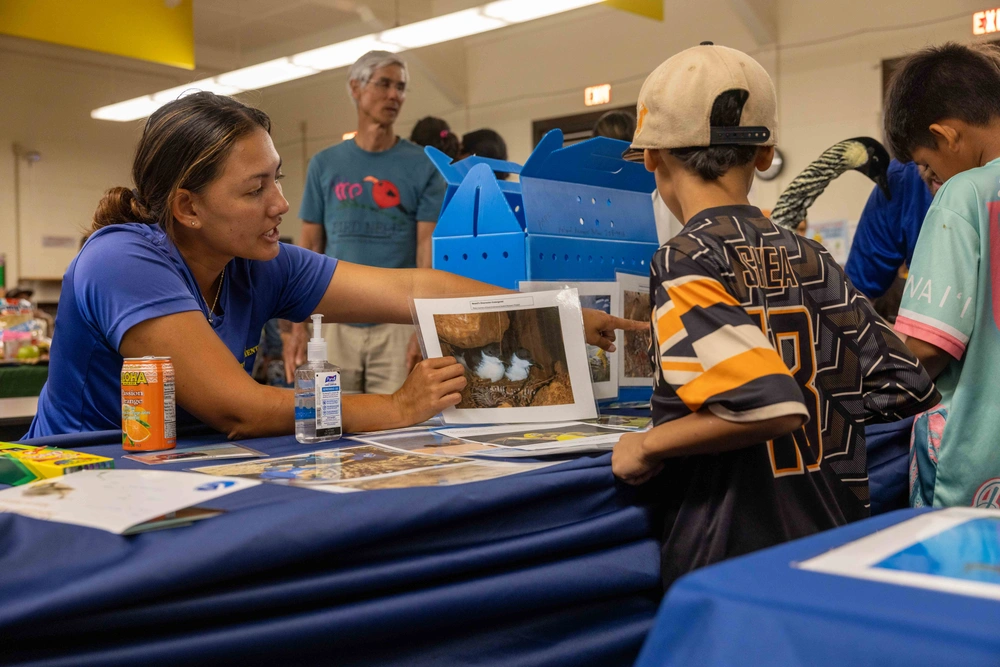Darrian serves as a seafloor mapping intern aboard the E/V Nautilus in the Papahānaumokuākea Marine National Monument
Where Are They Now? Darrian Muraoka, Youth Tour 2014
By Allison Young
For this issue, we talked story with Darrian Muraoka, an alumnus from Youth Tour 2014. Darrian is from Kekaha and graduated from Kamehameha schools. She received a Bachelor of Science in marine science from California State University – Monterey Bay and a Master of Science in tropical conservation biology and environmental science with a focus on water quality. Darrian is back on Kauaʻi as a biologist at Pacific Missile Range Facility.
Aloha, Darrian. What’s your favorite memory from the Youth Tour?
On the Youth Tour, our group connected Kansas and Hawaiʻi delegates. I remember making friends with a lot of the teens from Kansas, and we still keep in touch to this day. Some of them have families now, some of them are traveling or living in different places around the world, some of them work for their co-op now, too. It’s really cool to see how deep the Youth Tour experience impacted us.
I loved learning about the legislative process and meeting senators and representatives. It turned out to be really important for my line of work. Because of Youth Tour, in addition to laws and legislators in Hawaiʻi, I also know who helps protect Hawaiʻi’s interests at the federal level because they’re still working in Washington, D.C.
Tell us about your path after graduation.
My family is a fishing family. My grandfather knows the westside waters like the back of his hand. I grew up always by the coastline, on a boat, on the water. It inspired me to continue learning how to have protective and productive ecosystems around the ocean. I attended CSU – Monterey Bay and chose marine science as my major. After graduating in 2019, I continued my education at University of Hawaiʻi at Hilo in the tropical conservation biology and environmental science program, focusing on water quality. I worked at the Coastal Management office on capacity building with coastal communities, studying how they utilize the ocean, their cultural, fishing and gathering practices.
After graduation, I was an intern on EV Nautilus, a seafloor mapping research ship. It’s owned by Bob Ballard, who discovered the RMS Titanic wreckage. I stayed on the boat for a month with three other young Kauaians to map the seafloor.
My first job in Hilo was at Department of Aquatic Resources for the Protected Species Program. I mainly focused on working with honu and ʻīlio holo i ka uaua (green sea turtles and Hawaiian monk seals). I ran the Barbless Circlehook Project, and we worked with boat recreaters and coastal fisherman on how to fish around these species to prevent them getting caught unintentionally. I was able to work at fishing tournaments across the island chain. A lot of those were on Kauaʻi with fishermen, and so I was inspired to go home. When a natural resources biologist position at Pacific Missile Range Facility opened, I applied.
Every day my work is different. In general, I work with ʻuaʻu kani, nēnē, mōlī (the wedgetailed shearwater, Hawaiian goose, Laysan albatross), honu and ʻīlio holo i ka uaua to monitor the protected species, ensuring their survival on the base. This includes swapping fertile mōlī eggs with infertile eggs on the north shore and dark sky searches with Kani Wildlife Control.
This August, I’m going to be helping the Papahānaumokuākea Marine Debris Project, removing debris from the different islands and the monument. It’s inspiring. There are many artifacts from Polynesian and American history out there.
What do you like to do in your free time?
I started paddling in the sixth grade with the Kōloa Canoe Club. At Kamehameha, my sports were paddling, kayaking and sailing—anything on the water. Nowadays, I paddle with the West Kauaʻi Canoe Club, and we just started a kūpuna program. I am teaching kūpuna 56 years and older how to paddle. We are recruiting new and first-time paddlers.
I also volunteer with Hui Mālama Polihale to take care of the iwi kūpuna, heiau and restoration site.
Which one of KIUC’s Ho‘oka‘ana Waiwai shared values most resonates with you?
These are all great values, all resonate with me. But definitely ʻohana and kuleana. Because of the ʻohana I have, which include my family members, friends, communities and organizations I am a part of, they have allowed me to better understand and accept my kuleana of the work being done in Hawaiʻi to move our communities forward and with care, and to the bigger picture of protecting our native and endangered species and the beautiful ecosystems of Hawaiʻi.



